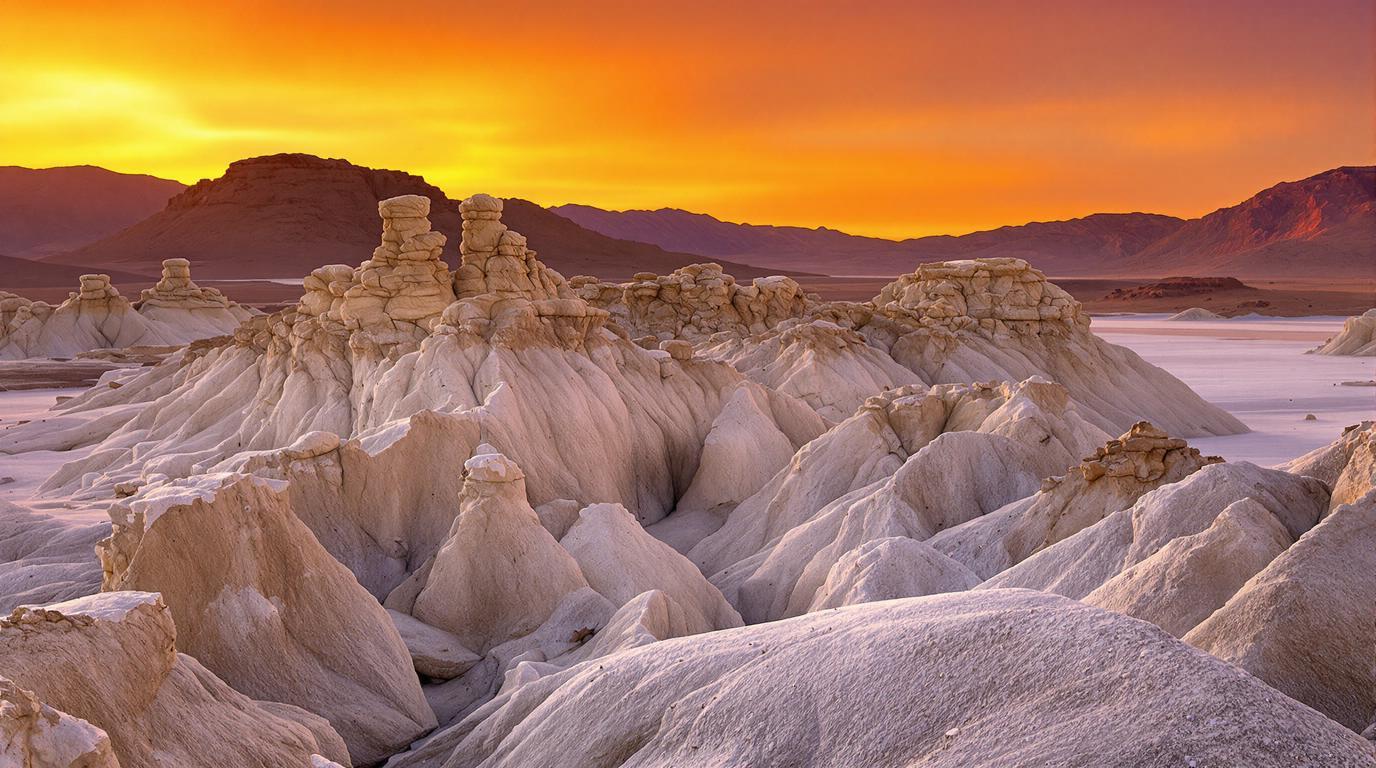Valle de la Luna: Chile’s Otherworldly Desert That Turns Gold at Sunset
The sun hangs low over the salt-crusted ridges of Valle de la Luna, casting long shadows across a landscape so alien that NASA once tested Mars rovers here. Located 13 kilometers west of San Pedro de Atacama in northern Chile (22.9275° S, 68.3000° W), this “Moon Valley” isn’t just aptly named—it’s literally the closest you can get to walking on another planet without leaving Earth.
A geological wonder millions of years in the making
Valle de la Luna sits within the driest non-polar desert on Earth, where less than 15mm of rain falls annually. Over millennia, powerful Andean winds have sculpted the salt, clay, and sand into bizarre formations that seem more like a science fiction set than a natural landscape. The valley is part of Los Flamencos National Reserve in the Cordillera de la Sal mountain range.
“This landscape you see formed over 22 million years of geological drama—volcanic eruptions, tectonic uplift, and extreme erosion,” explains Diego Morales, a local guide who has led tours here for 15 years. “It’s essentially an outdoor museum of Earth’s most dramatic processes.”
The best time to visit: Summer in the Southern Hemisphere
December through February offers the most reliable weather for exploring Valle de la Luna. Summer temperatures hover around 75-85°F (24-29°C) during the day but can plummet to 40°F (4°C) at night—a reminder that you’re at 2,500 meters elevation in one of the world’s most extreme environments.
These dramatic temperature swings are similar to the bizarre environments you might find in America’s most alien-like national parks, where geological extremes create otherworldly landscapes.
Three unforgettable geological masterpieces
No visit is complete without witnessing Las Tres Marías—three weathered rock formations resembling Mary figures standing eternal watch over the valley. The amphitheater-like depression nearby creates natural acoustics so perfect you can hear a whisper from 50 feet away.
The Great Dune (Duna Mayor) rises nearly 400 feet, offering intrepid hikers panoramic views across the Salt Range. Those who make the climb are rewarded with sunset vistas that rival even the most spectacular South Pacific sunsets—except here, the entire landscape transforms into shimmering gold.
Cave systems crystalized in salt
The salt caves (Cavernas de Sal) offer a surreal journey beneath the surface. These crystalline tunnels form a labyrinth where salt stalactites hang delicately from the ceiling. The formations resemble the mystical atmosphere you might find in forests that inspired the floating mountains of Avatar, though here the magic is crafted entirely from minerals.
The golden hour phenomenon
Valle de la Luna’s true magic occurs at sunset when the fading light transforms the monochromatic landscape into a canvas of oranges, pinks, and purples. As shadows lengthen, the salt crystals capture and reflect light, creating an illusion that the entire valley is glowing from within.
“I’ve traveled to 62 countries, and I’ve never seen anything like Valle de la Luna at sunset,” says travel photographer Emma Richards. “The way the light plays across the salt formations creates a three-dimensional color experience that photographs simply can’t capture.”
How to experience Valle de la Luna
Most visitors base themselves in San Pedro de Atacama, a charming adobe town that serves as the gateway to the Atacama’s natural wonders. Tours depart daily around 4pm to catch the sunset, with prices starting at $15 USD per person. For more solitude, consider renting a bicycle or hiring a private guide to visit during quieter morning hours.
The preservation efforts here rival those protecting ancient temples and historic sites worldwide—reminding us that geological wonders deserve the same care as human-made masterpieces.
A photographer’s dream landscape
Bring wide-angle lenses to capture the expansive vistas and a tripod for the challenging low-light conditions at sunset. The ever-changing light conditions create photograph opportunities that rival even Australia’s most spectacular sunrise views—though here, it’s the sunset that steals the show.
“The valley demands patience from photographers,” notes Chilean landscape photographer Carlos Díaz. “Wait for that perfect moment when the light breaks through the mountains and illuminates just one formation while the rest remains in shadow.”
Valle de la Luna isn’t simply a place you visit—it’s a place that transports you beyond Earth, offering a rare glimpse of what exists when our planet pushes the boundaries of the possible. In this harsh yet beautiful wilderness, you’ll find yourself walking through a landscape that feels more like a dream than reality—a dream painted in salt, stone, and gold.
